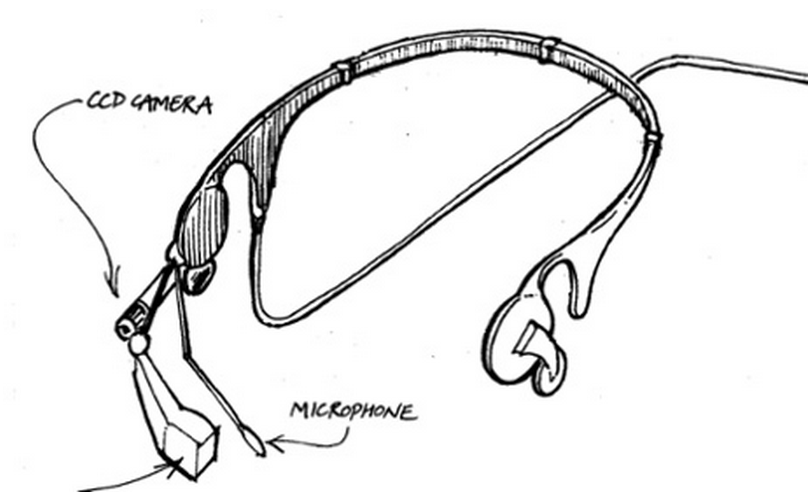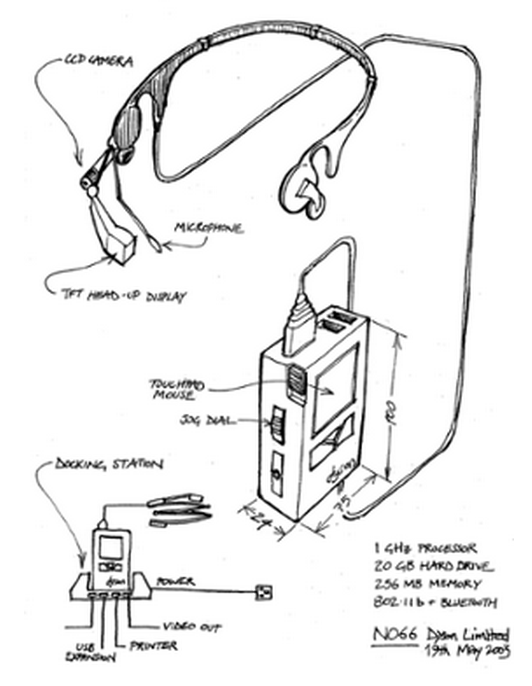Dyson Halo - smart glasses 10 years before Google Glass
Modern technologies could be completely different if Dyson had not decided to put off its development of “smart glasses”, the prototype of which was ready 10 years before the release of Google Glass.

By its 21st anniversary, Dyson revealed some details of its deferred development, among which was an analogue of Google Glass. Until today, Dyson Halo was known only by the internal number of the project No. 66. The project was developed in 2001 and was a glasses with the support of a full-color 3D display, complementing the real picture, which Google, Epson and Vuzix are currently working on.

The glasses were mounted on a round frame, framing the head to the back of the head, and were supported by a pocket computer, which resembled a Sony Walkman.
')

Halo worked as a communication device, but could also display the necessary information on a virtual screen using voice or visual commands. Halo glasses could also be used as a regular display for a foreign computer. The headset uses two mirrors to reflect into the eyes an image from two tiny monitors mounted on the owners' temples, creating the illusion of a translucent 10 inch screen projected 1 meter in front of your eyes.

This is what the main Halo menu looked like:

Dyson also developed a virtual assistant who could handle basic voice commands like early versions of Apple's Siri or Google Now or, for example, help the headset owner download books online . More users could type on a designed virtual keyboard that could track the movement of fingers, while a special wrist device acted as a mouse pointer.

Source: https://habr.com/ru/post/224947/
All Articles